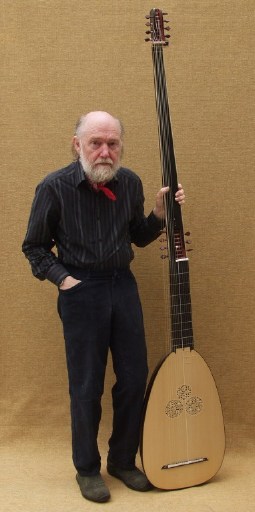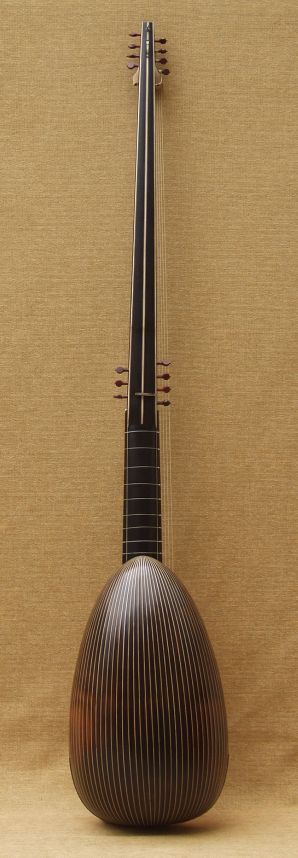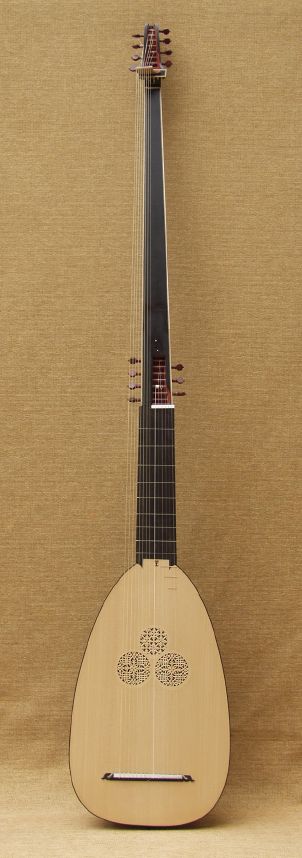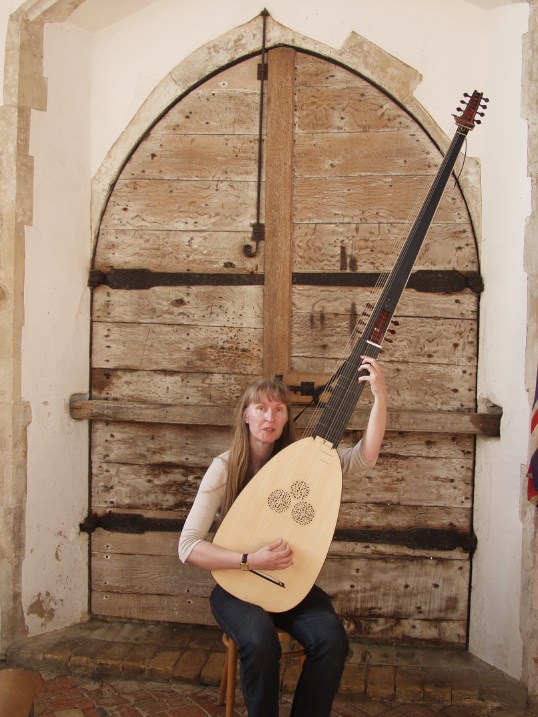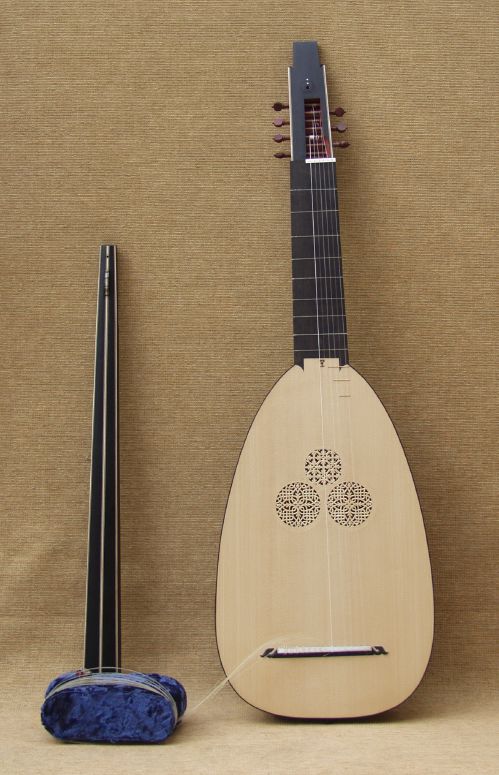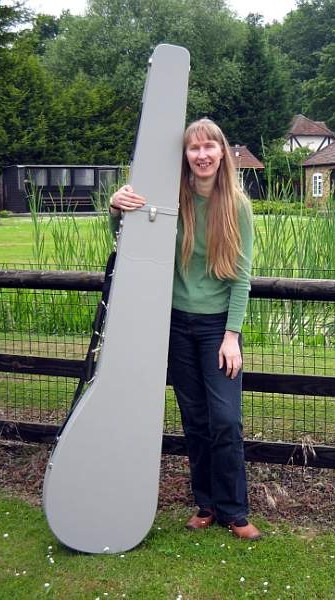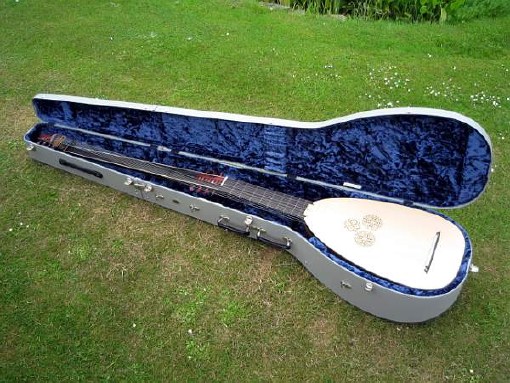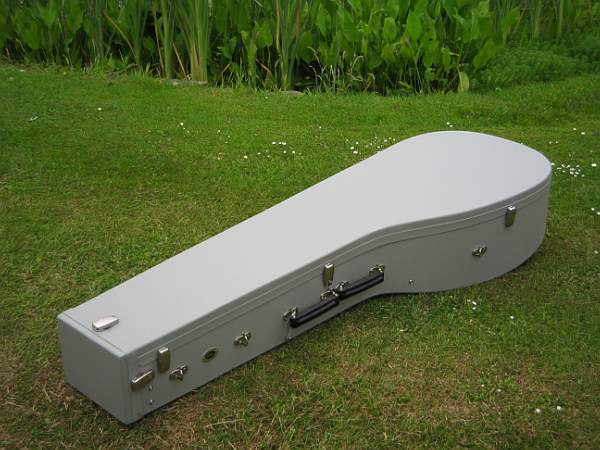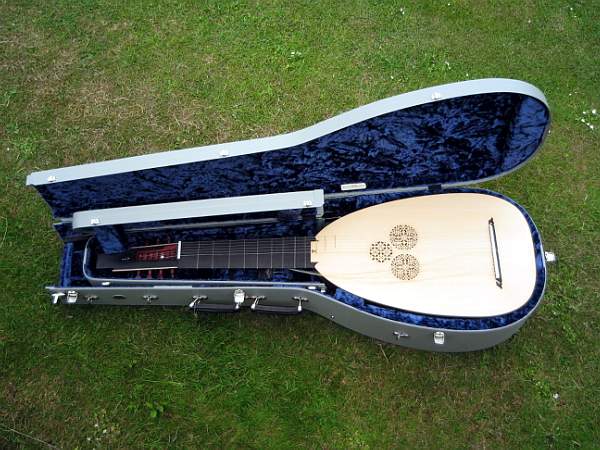|
This theorbo was specially designed for Lynda Sayce, a busy international player who frequently needs to carry a large Italian style theorbo on airlines around the world. It has become clear that checking such instruments into the hold is to risk serious damage if not total destruction. This is not just alarmist hearsay, here is the result for a very fine theorbo made by Michael Lowe and belonging to Jakob Lindberg. It had survived unscathed since being made in 1974 - until checked into a hold with Ryanair during the recent security clampdown in 2006! Fortunately Michael has been able to repair it, but it did entail some sleepless nights making a whole new extension. The photograph doesn’t do justice to the force involved, because the hard case was also enclosed in a thick padded flight case!
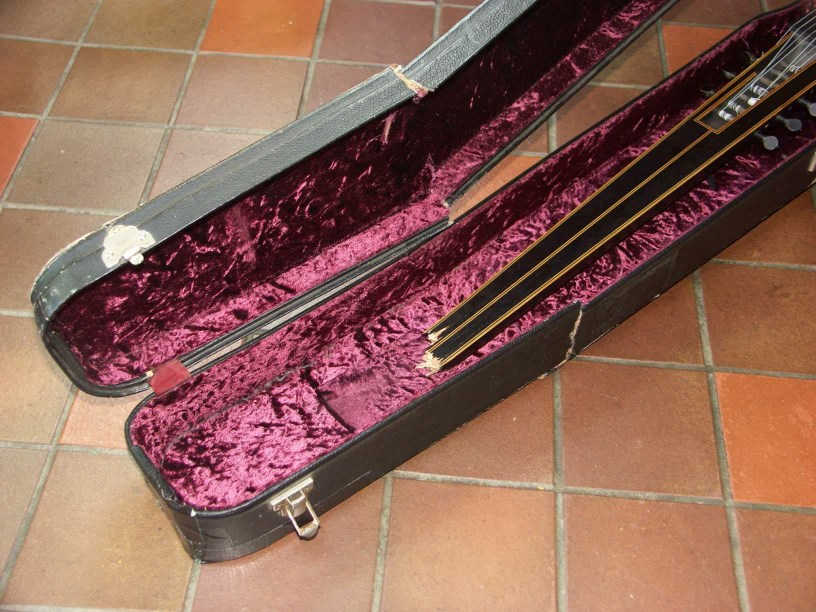
The normal solution of buying a seat for your instrument is now nearly impossible for such a long instrument as a full-size theorbo because the budget airlines have reduced the legroom in order to cram in more rows of seats. This means that you can no longer angle the instrument to fit under the overhead lockers. (For detailed advice on travelling by air with a lute see Lynda’s article on the subject.)
I had to find a way of making the theorbo in its travelling case shorter, without making it deeper, so that it would still fit in the footwell between the seats. Strangely there is a precedent for a folding theorbo; an original by Sebastian Schelle (Nürnberg GNM MI 574) has had a hinge inserted into the extension during the 18th century allowing it to be folded back on itself. This has been copied once or twice but it does require the bass strings to be completely removed from the pegbox before the folding can take place. However these loose strings are very liable to become tangled and are time-consuming and fiddly to replace. After a while too the ends of the strings fuzz up and become more difficult to insert in the pegs. Moreover, to reduce the length of a full-size Italian theorbo to about the size of a cello case, which is the acceptable norm for instruments carried on airlines, the pegbox would overlap the body. This would risk damaging the back of the instrument and would also increase the depth of the case . A further disadvantage, for me, of this solution was the necessarily clunky nature of a hinge strong enough to do the job.
We needed a full-sized original 17th century theorbo that had a fairly shallow body. Most theorbos do have a somewhat flattened cross-section to increase projection and to make them more manageable to hold, but Matheus Buechenberg seems to have specialised in flattening the backs more than most and he was working in Rome in the early 17th century at just the time when the theorbo was at the height of its development. There is a relatively large number of his theorbos still extant in museums around the world and clearly his instruments were regarded as highly successful in his day.
We settled on the Buechenberg theorbo of 1614 in the V&A (190-1882) since it is well-preserved, accessible and the ideal size. I made arrangements to measure it together with Michael Lowe and Stephen Gottlieb in December 2006. It has a particularly beautiful form with a long elegant shallow back. (Out of interest, and as part of the procedure of making the mould, I worked on a geometrical analysis of the outline, profile and cross-sections and found it particularly cleverly worked out but slightly different from the analysis in Kevin Coates’ study, Geometry, Proportion and the Art of Lutherie.)
I decided to make the body out of some old Brazilian rosewood I’ve had since the 1970’s even though most of Buechenberg’s theorbos were made of yew or maple. This was to give as much projection as possible to cope with today’s performing conditions and also to give as much stability as possible since this instrument was going to be exposed to constant changes in tension as the bass strings were tuned and untuned for transport. This is a substantial theorbo capable of holding its own in full ensemble for Monteverdi operas and, because of its 10 fret neck, it is also perfect for Kapsberger, Piccinini and other solo works.
The big breakthrough in the design of the “folding” mechanism came when I realised I could detach the whole upper pegbox, pegs and all, with the strings still attached. This removed half the difficulties with the previous designs and allows the long, and easily kinked, bass strings to be wound neatly round a special reel to keep them out of harm while in transit in the case. It also allows the main dismantling point to be arranged as a tenon and socket joint which could be nearly invisible in general use. No-one in any audience need ever realise that they were seeing and listening to a “folding” theorbo. The geometry of this joint is crucial to the whole enterprise, giving lateral as well as fore and aft stability. I had to devise a locking mechanism that would hold the joint shut but still be easily undone. After much experiment and several re-thinks, I came up with a concealed cam-action design and commissioned a local firm of precision engineers more used to working for the motor racing industry to make it for me. On their advice it involves three different kinds of steel engineered to work together smoothly.
Originally I had consulted with Mike Burrows, (the brilliant local engineer who designed the bike that Chris Boardman rode to win the 1994 Olymic gold medal) with a view to using a carbon fibre moulding for the main shaft of the extension. But the more I thought about it, the more attractive seemed the idea of using a traditional lightweight wooden shaft veneered to continue the decorative inlay along the whole extension. Partly this was to be sure that no unwanted resonances appeared from an alien material, and partly because I wanted to make the “folding” nature of the theorbo undetectable in normal use.
|
|
It remained to design a case which would be able to hold the instrument safely both in its normal extended playing state and in its contracted flying or travelling mode. In effect one had to be able to carry the long case inside the short case. And then be able easily to extend it on arrival to protect the instrument while at the venue. After much doodling and calculating angles of taper I finally came up with a design where the long end detaches from, and nests inside, the main body of the case when in travelling mode but which can be firmly attached when in playing mode. I drew out the plans full size, built a small maquette to show the system and went to see Steve Savage of Kingham MTM Case Co. We had a joint consultation with Lynda to thrash out the details, Steve set straight to work next day and it was built within the week!
|
|
I would like to thank all who have helped with the development of this instrument, especially Lynda Sayce for the original commission and for her encouragement and advice throughout the process, Jakob Lindberg and Michael Lowe for permission to use the photos of Ryanair’s mishandling and to Steve Savage for his work on the case.
To return to the main catalogue click here |
